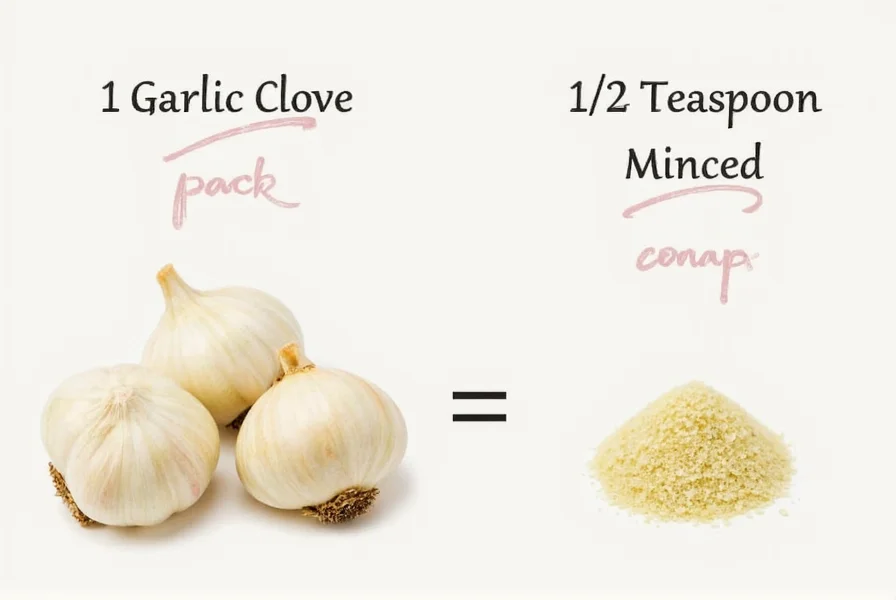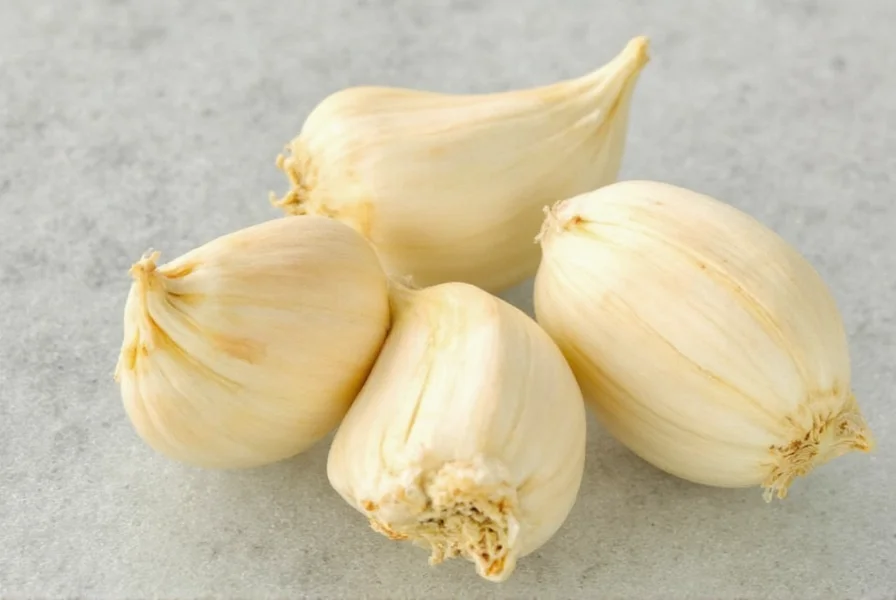Converting garlic cloves to teaspoons is a common kitchen challenge that affects recipe accuracy. Whether you're following a family recipe passed down through generations or trying a new dish from a food blog, understanding this conversion ensures your culinary creations turn out perfectly every time.
Understanding Garlic Measurement Conversions
Garlic measurements can be confusing because recipes often switch between counting cloves and using volume measurements. This inconsistency stems from garlic's natural variation in size and the different preparation methods used in cooking. When a recipe calls for 3 cloves of garlic, knowing the equivalent in teaspoons helps maintain consistency in your dishes.
The standard conversion assumes medium-sized garlic cloves that have been finely minced. However, several factors influence the final volume, making it important to understand the variables at play when converting how many teaspoons in 3 cloves of garlic.
Garlic Clove Size Variations
Not all garlic cloves are created equal. Grocery stores typically carry three size categories:
| Garlic Size | Teaspoons per Clove (minced) | Teaspoons in 3 Cloves |
|---|---|---|
| Small | ¼ tsp | ¾ tsp |
| Medium | ½ tsp | 1½ tsp |
| Large | 1 tsp | 3 tsp (1 tbsp) |
This garlic clove to teaspoon conversion chart demonstrates why simply counting cloves isn't always precise enough for certain recipes. Baking especially requires accurate measurements, as garlic can significantly alter both flavor and chemical reactions in dough.

Factors Affecting Garlic Volume Measurements
Several elements impact how many teaspoons you'll get from three garlic cloves:
Preparation Method Matters
How you prepare your garlic dramatically affects volume:
- Minced garlic: Finely chopped yields the standard ½ tsp per medium clove
- Chopped garlic: Rougher pieces create more air space, reducing density (about ⅓ tsp per clove)
- Pressed garlic: Garlic press extracts more liquid, increasing volume slightly (about ⅝ tsp per clove)
Moisture Content Differences
Freshness affects measurements. Newly harvested garlic contains more moisture than aged bulbs, yielding slightly more volume when minced. For the most accurate 3 cloves of garlic to teaspoons conversion, use firm, plump cloves without wrinkles.
Practical Measurement Techniques
When converting how many teaspoons equal 3 garlic cloves, try these kitchen-tested methods:
The Water Displacement Method
For scientific precision, use a graduated measuring spoon:
- Fill a teaspoon measure halfway with water
- Add your minced garlic until water rises to the 1½ teaspoon mark
- The displaced water equals your garlic volume
Visual Estimation Guide
Without precise tools, use these visual references:
- One medium clove ≈ size of a quarter coin when minced
- Three cloves ≈ size of a ping pong ball when finely minced
- 1½ teaspoons ≈ half the volume of a standard ice cube

When Precision Really Matters
Understanding exactly how many teaspoons in 3 cloves of garlic becomes crucial in specific culinary situations:
- Preserving recipes: When canning or pickling, precise garlic measurements affect both flavor and food safety
- Baking applications: In breads and savory pastries where garlic interacts with yeast
- Commercial food production: When scaling recipes for larger batches
- Dietary restrictions: For those monitoring garlic intake due to digestive sensitivities
For everyday cooking, minor variations won't ruin your dish. However, when following recipes that specify both cloves and volume measurements, consistency ensures your garlic measurement conversion for 3 cloves produces reliable results.
Common Measurement Mistakes to Avoid
Cooks frequently make these errors when converting cloves to teaspoons:
- Not accounting for different garlic varieties (elephant garlic is much larger)
- Measuring before mincing instead of after
- Packing minced garlic too tightly into the spoon
- Using dried garlic powder without adjusting for concentration (3:1 ratio)
Remember that 3 whole garlic cloves to teaspoons conversion only applies after preparation. Three whole cloves occupy significantly more volume than three cloves worth of minced garlic due to air pockets between pieces.
Frequently Asked Questions
How many tablespoons is 3 cloves of garlic?
Three medium garlic cloves equal approximately ½ tablespoon of minced garlic. Since 3 teaspoons make 1 tablespoon, and 3 cloves equal 1½ teaspoons, the conversion is 0.5 tablespoons. For large cloves, 3 cloves would equal a full tablespoon.
Can I use garlic powder instead of fresh cloves?
Yes, but adjust quantities carefully. The standard conversion is ⅛ teaspoon of garlic powder equals one fresh garlic clove. For 3 cloves, use ⅜ teaspoon garlic powder. Remember that powder has more concentrated flavor, so start with less and adjust to taste.
Does roasting garlic change the teaspoon measurement?
Roasting reduces garlic's volume slightly due to moisture loss. Three roasted medium cloves yield approximately 1¼ teaspoons instead of the standard 1½ teaspoons for fresh minced garlic. The flavor becomes more concentrated, so you might use slightly less than the standard conversion.
How can I measure garlic without a teaspoon?
Use common kitchen items as references: 1½ teaspoons of minced garlic equals the volume of three standard dice placed side by side, or fills the first joint of your index finger to the knuckle. Three garlic cloves minced should form a mound about the size of a quarter coin.
Why do recipes use different garlic measurements?
Recipe authors use different measurement systems based on tradition, regional preferences, and intended audience. Professional chefs often specify cloves for authenticity, while food scientists prefer volume measurements for precision. Understanding both systems helps you adapt recipes successfully regardless of how garlic is specified.










 浙公网安备
33010002000092号
浙公网安备
33010002000092号 浙B2-20120091-4
浙B2-20120091-4